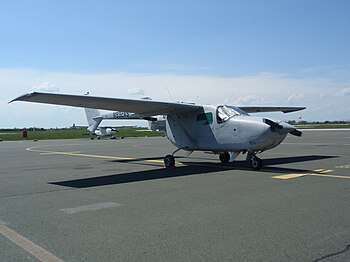1996 shootdown of Brothers to the Rescue aircraft

A Cessna 337 similar to the incident aircraft
|
|
| Incident summary | |
|---|---|
| Date | February 24, 1996 |
| Summary | Multiple shootdown |
| Site | Near the northern Cuban coastline |
| Passengers | 0 |
| Crew | 4 |
| Fatalities | 4 |
| Survivors | 0 |
| Aircraft type | Cessna Skymaster (x2) |
| Operator | Brothers to the Rescue |
The 1996 shootdown of Brothers to the Rescue aircraft took place on 24 February 1996, when a Cuban Air Force Mikoyan MiG-29UB shot down two Cessna Skymaster aircraft operated by Brothers to the Rescue. The aircraft had been releasing leaflets over Cuban territory. Killed in the incident were Cessna pilots Carlos Costa, Armando Alejandre, Jr., Mario de la Peña, and Pablo Morales.
On 24 February 1996, two of the Brothers to the Rescue Cessna Skymasters were shot down by a Cuban Air Force Mikoyan MiG-29UB, while a second jet fighter, a MiG-23, orbited nearby. Killed in the shootdowns were pilots Carlos Costa, Armando Alejandre, Jr., Mario de la Peña, and Pablo Morales. A third aircraft, flown by Basulto, escaped. It is claimed the first aircraft was downed 9 nautical miles (10.4 statute miles; 16.7 km) outside Cuban territorial airspace and the second aircraft was downed 10 nautical miles (11.5 statute miles; 18.5 km) outside Cuban airspace. The aircraft used were Cessna 337s, a twin-engine civilian light aircraft known for its safety and simple operation. A type similar to those owned by Brothers to the Rescue, designated the Cessna O-2A Super Skymaster, was in use by the United States military until 2010. Cuba claimed that the letters USAF were visible on them. It is claimed the Cuban Air Force pilots' radio transmissions proved that they had been identified as belonging to Brothers to the Rescue before the shootdown.
The incident was investigated by the International Civil Aviation Organization (ICAO). Their report concluded that the authorities in Cuba had notified the authorities in the United States of multiple violations of their airspace since May 1994. In at least one case (13 July 1995), the pilot had released leaflets over Havana. The United States authorities had issued public statements advising of the potential consequences of unauthorized entry into Cuban airspace and had initiated legal actions against Basulto, but had retained his certification to fly during appeal. After Basulto was warned by an FAA official about the possibility of being shot down, he replied, "You must understand I have a mission in life to perform", disregarding the potential danger involved. He would later say he considered the group's activities to be acts of civil disobedience against the regime, and a demonstration that such disobedience was possible.
...
Wikipedia
